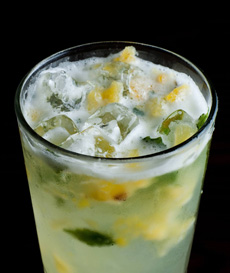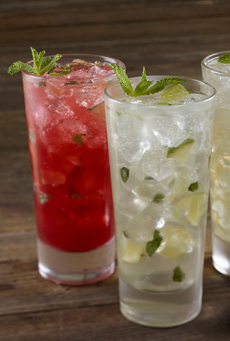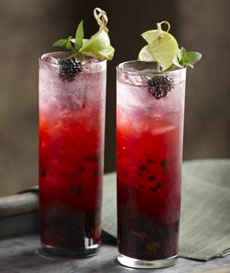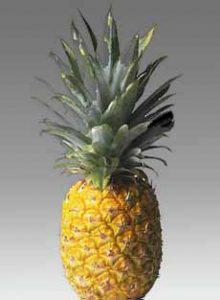RECIPE: Pineapple Mojito For National Mojito Day
|
|
July 11th is National Mojito Day, good weather for tossing down a refreshing drink of rum with lime, mint and sugar. Pineapple was not part of the original recipe. Pineapple juice and coconut rum were added later, to variations that include the fruit-flavored Mojito recipes below. This recipe, created by Cocina 214 in Winter Park, Florida, uses pineapple plus two different rums: pineapple rum and coconut rum. If you don’t have either and you only want to buy one, go for the coconut rum; the pineapple juice will give you the pineapple hit. Fresh fresh pineapple chunks, of course, create a far more delicious drink than canned pineapple. Ingredients For 1 Tall Drink 1. MUDDLE the mint, pineapple, lime juice and simple syrup. Add ice. Then add the rums and shake well. 2. POUR the contents into a 16-ounce glass. Garnish with fresh pineapple spear and/or leaf. The mojito (mo-HEE-toe) is a quintessential Cuban cocktail. The name derives from the African voodoo term mojo, to cast a small spell. (Today the term is used as slang to refer to personal magnetism, charm, and/or sex appeal.) According to Bacardi Rum, the drink can be traced to 1586, when Sir Francis Drake and his pirates* unsuccessfully attempted to sack Havana for its gold. His associate, Richard Drake (a possible distant relative), was said to have invented a Mojito-like cocktail known as El Draque (Sir Francis Drake’s pirate nickname). It was made with aguardiente, a crude forerunner of rum; plus sugar, lime and mint. In 1862, when the Bacardi Company was established in Cuba, rum was substituted and the cocktail became known as a Mojito. Aguardiente is still sold today. It is made by fermentation and distillation of sugared (cane) or sweet must made from fermented can juice. Other varieties are made with fermented fruit. Cane aguardiente and cachaça are similar, but distinct, products. *Drake may have been a pirate, but the half-share of the booty he gave to Queen Elizabeth was an enormous contribution to her coffers. In 1580, for example, her portion of the treasure surpassed the rest of the Crown’s income for that entire year. |
|
|
|
||






